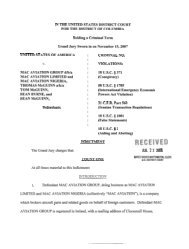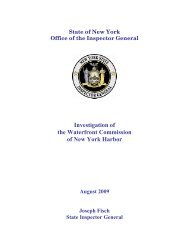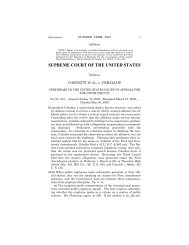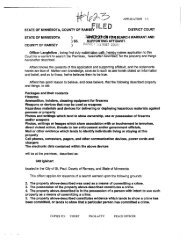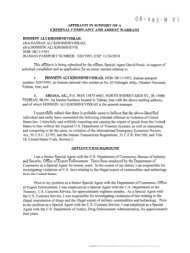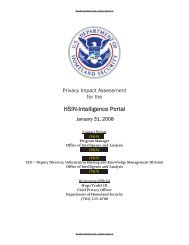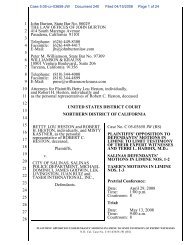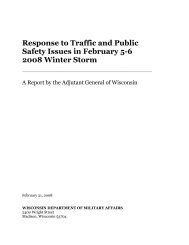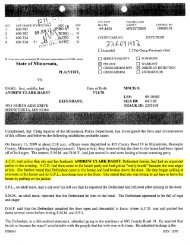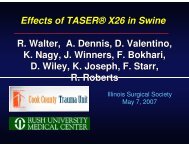TASER Electronic Control Devices Review Of Safety Literature
TASER Electronic Control Devices Review Of Safety Literature
TASER Electronic Control Devices Review Of Safety Literature
You also want an ePaper? Increase the reach of your titles
YUMPU automatically turns print PDFs into web optimized ePapers that Google loves.
ual, no vulnerable period escapes the <strong>TASER</strong> ECD pulsing – the <strong>TASER</strong> ECD<br />
pulse hits every T-wave.<br />
Urban Myth of Delayed VF<br />
As discussed earlier, a death from electrically induced VF is instantaneous. The<br />
induction takes a few seconds and collapse follows within another 5-15 seconds.<br />
In the typical arrest-related death (with or without ECD usage) the collapse occurs<br />
minutes to hours after control is gained. This has forced some ECD critics to<br />
speculate that there must be some mysterious mechanism for a delayed apperance<br />
of VF.<br />
The sole “evidence” for this speculation is an anecdote of a Danish electrician<br />
who had a supposed cardiac arrest during a soccer match. 31 He blamed it on a<br />
work related shock 12 hours previous. One would have to note that he had a financial<br />
incentive to blame his cardiac condition on a job injury rather than on his<br />
recreation. Whatever happened he did not die.<br />
Even with high current industrial or lightning electrical injuries delayed VF is not<br />
seen. 32<br />
<strong>Safety</strong> Margin for a Single Pulse in the Vulnerable Period<br />
The <strong>TASER</strong> M26 main phase delivered charge is about 85 µC (microcoulombs)<br />
and the <strong>TASER</strong> X26 delivers about 100 µC. The critical parameter of electrical<br />
stimulation by short duration pulses is the electrical charge. 3 This has been more<br />
recently confirmed for cardiac stimulation with short duration pulses, such as<br />
those from the <strong>TASER</strong> ECDs. 33<br />
Green Model: 130:1 (X26) and 153:1 (M26) <strong>Safety</strong> Margins<br />
Green investigated the VF induction threshold for canines stimulated along the<br />
length of their body. 34 He found that the lowest threshold occurred with a 5 ms<br />
quarter sine wave and was 2 A. Integrating, we find a minimum required charge<br />
of 6.5 mC (millicoulombs). On the basis of many studies, it is common practice to<br />
use a normalization factor of 2 to 1 to go from canine results to human as humans<br />
are so much larger than the small dogs typically used in these laboratory<br />
experiments. 8 This suggests a human VF threshold of 13 mC. With the <strong>TASER</strong><br />
X26 charge of 100 µC we can calculate the safety margin as:<br />
<strong>Safety</strong> margin = 13 mC ÷ 100 µC<br />
= 130:1<br />
For the <strong>TASER</strong> M26 the safety margin would then be even higher at:<br />
<strong>Safety</strong> margin = 13 mC ÷ 85 µC<br />
28




